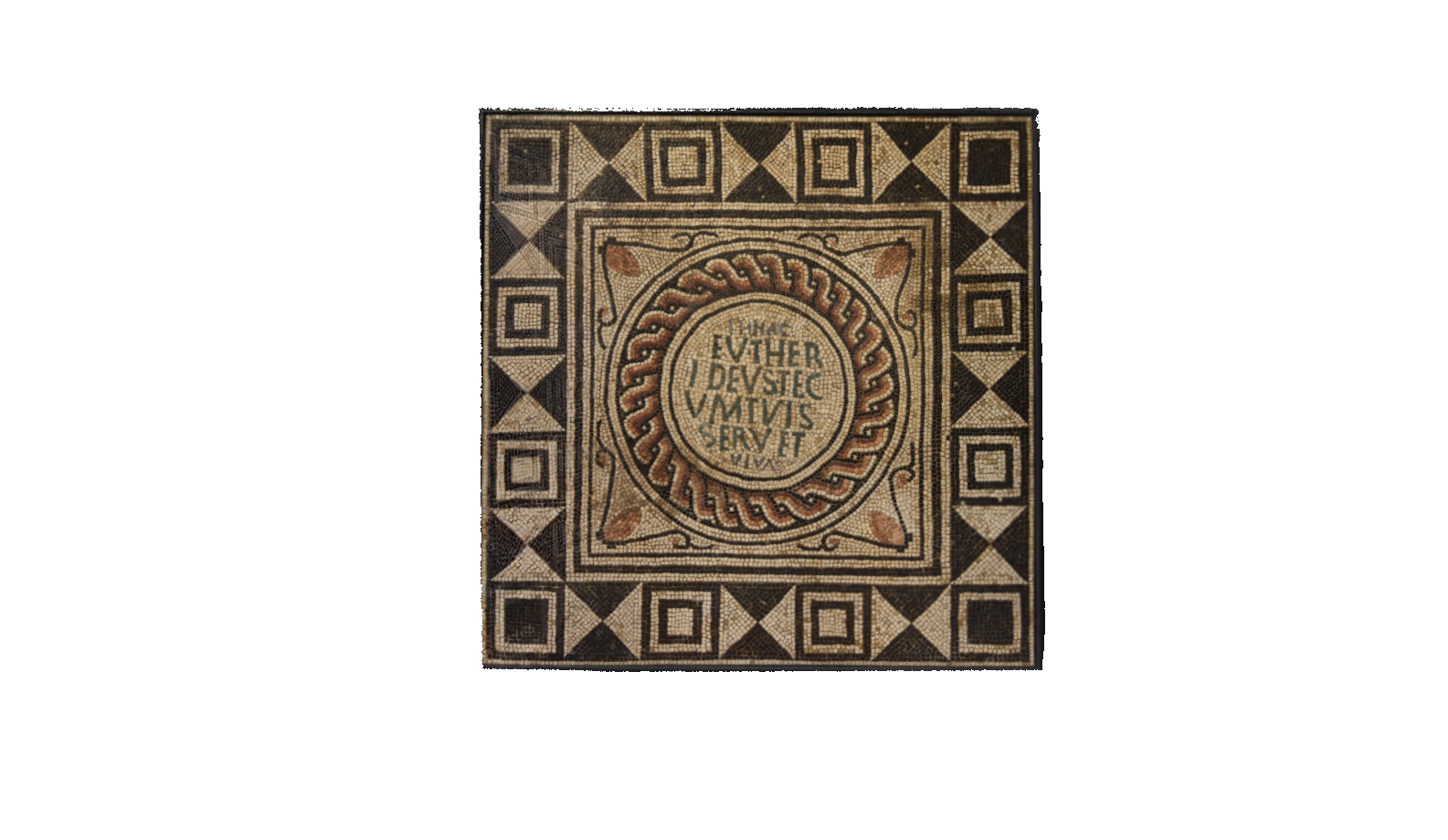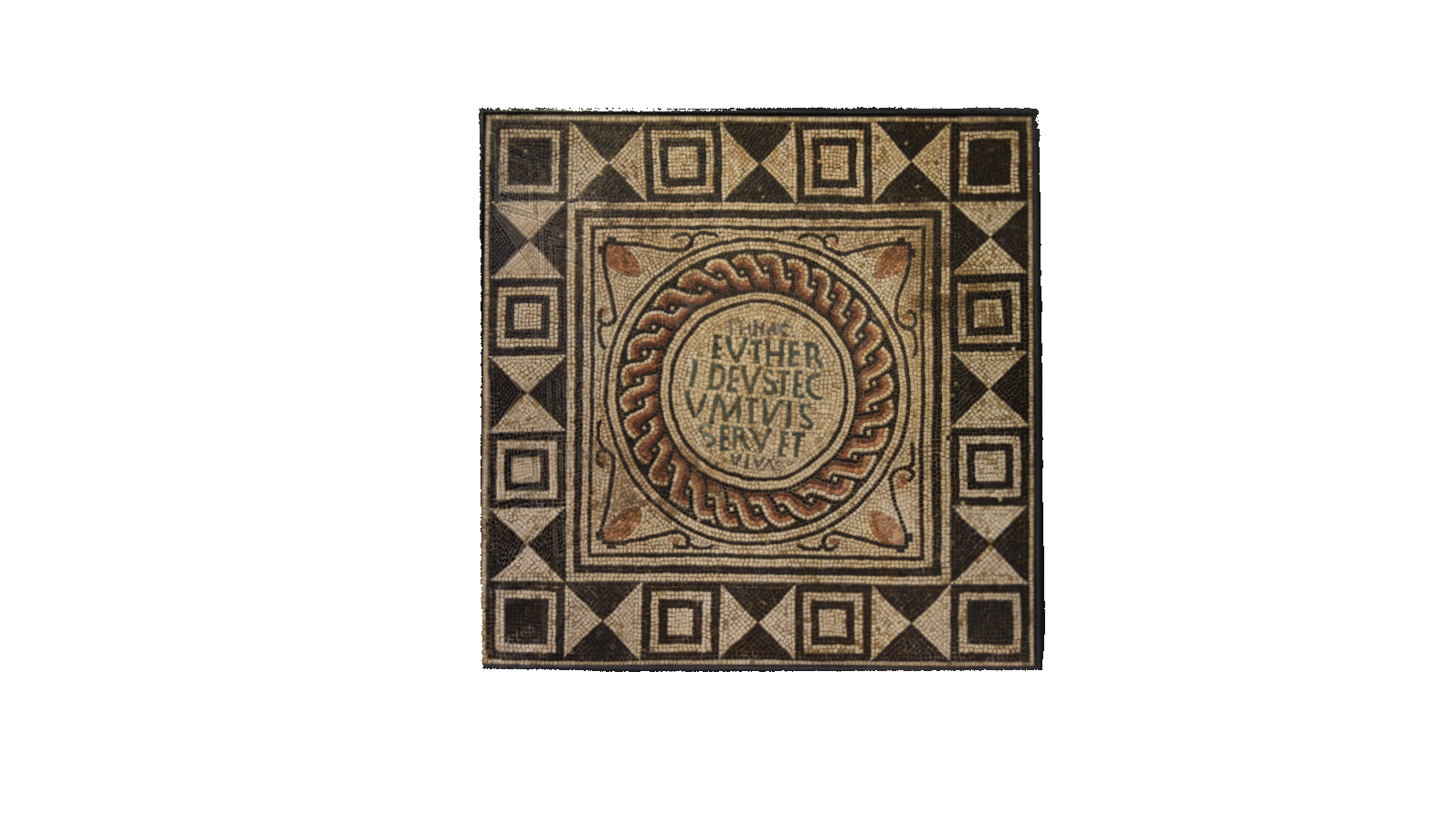Description
Click on the image to go full screen
This mosaic, found in 1925 near the Town Hall and rediscovered in 1931, was dated to the middle of the 4th century AD and represents the first real evidence of Christianity in Padua. The portion exhibited today in the Museum was originally part of a large Roman floor mosaic made for a building under the small church of San Martino (now lost) dating back to the 8th century, about 400 years later. The Director of the Civic Museums at the time, Andrea Moschetti, decided to remove this piece, and in the 1980s, during the inauguration of the Eremitani building, the mosaic was inserted into the floor of a room; only recently it was placed on a dedicated panel.
The mosaic shows a geometric frame of black and white triangles and squares, delimiting a square space with choked hourglass shapes. In the centre, surrounded by a braid, there is a roundel with an inscription that reads: “In hac/ Euther/ i Deus te c/ um tuis/ servet/ vivas”. The four central rows are composed of green tesserae, while the first and the last, smaller ones, of glass paste. This suggests that they were added later.
The name of the subject of the inscription is rare in Cisalpine Gaul (northern Italy) and he is probably the one who financed the entire mosaic, which was designed as a floor surface for a worship hall for use by the Christian community, and the dedication is therefore to be interpreted as a heartfelt thank you. The wish is for divine protection for him and his family, and is a way to perpetuate the memory of his gesture.

